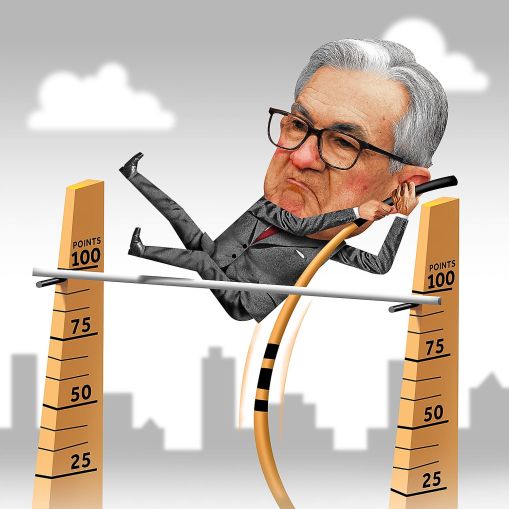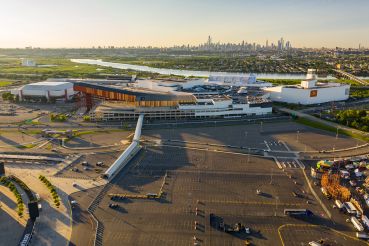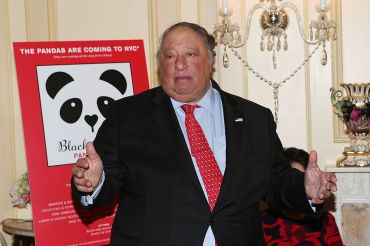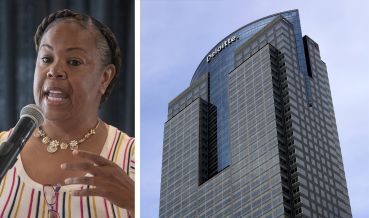CRE Holding Pattern Continues With Fed’s Sixth Straight Interest Rate Increase
Central bank indicates further hikes necessary to combat inflation
By Andrew Coen February 1, 2023 3:13 pm
reprints
The Federal Reserve raised interest rates a quarter of a percentage point Wednesday following a string of far bigger hikes, but lingering uncertainty about the Central Bank’s end game in confronting inflation will keep commercial real estate transactions largely stalled, according to analysts.
The Fed’s 25 basis point (bp) hike announced Wednesday afternoon placed the federal funds rate between 4.5 and 4.75 percent on the heels of a half-point increase in December and four consecutive 75 bps increases from June to November.
The interest rate climate is far different from the near-zero short-term borrowing conditions CRE borrowers enjoyed a year ago, but the Fed indicated in its post-meeting statement that there is still plenty of work to do when it comes to fighting inflationary pressures. Ongoing increases are necessary to achieve its 2 percent inflation level target, officials said.
“My biggest concern for CRE markets is they need clarity,” said Tom LaSalvia, director of economic research at Moody’s Analytics. “If the economic data isn’t pointing strongly enough toward inflation being under control and we know rates are going up, then CRE markets are going to remain a little illiquid, or certainly we’re going to see transaction volume remain subdued for the time being.”
Rising financing costs amid economic uncertainty have already put increased pressure on CRE transaction activity since the Fed’s first jumbo rate hike in 28 years last June, with total lending falling 17.3 percent in 2022, according to the Mortgage Bankers Association (MBA). The MBA is projecting another 4.7 percent drop in CRE lending this year to $700 billion.
David Schwarz, head of CRE strategies at real estate investor Amherst, said expectations of the Fed keeping future rate hikes on the table are baked into the market now as buyers proceed with caution about property valuations.
“The bid ask remains pretty wide between what buyers want to transact at and what sellers are willing to trade for, and a lot of that is related to rates and where people can finance their acquisitions and properties,” Schwarz said. “With a 25 basis point hike, this exploration of value will continue.”
Schwarz added that lending spreads may compress a little in the near term to compensate for higher interest rates as a clearer picture on valuations emerges. He cautioned, though, that leverage levels will remain a big constraint as lenders try to size up debt service coverage ratios on loans that hit the market when interest rates were far lower.
Fed Chair Jerome Powell said after the December meeting that the central bank was projecting interest rates would be 5.1 percent by the end of 2023. He said in a press conference Wednesday that estimates would be updated during the Fed’s next meeting after examining more economic data in March, and that this number “could certainly be higher.”
Xander Snyder, a senior CRE economist at First American, said the higher cost of capital spurred by recent interest rate hikes is a big part of what has created a “dislocation” between buyers and sellers with price expectations. He expects transaction volume to remain “muted” for the first half of 2023 before picking up in the latter half of the year.
“I think that once the disconnect on prices resolves, and I think that that will resolve once there is some stability to interest rates and interest rate expectations, you’ll begin to see transaction volumes pick up at that point,” Snyder said. “With the cost of capital uncertain in the short run, it will be harder for buyers and sellers to agree on prices in any asset class.”
A hawkish strategy by the Fed since last June is part of the central bank’s aim to lead the economy toward a soft landing by significantly reducing inflation without big unemployment losses — an accomplishment LaSalvia said would enable property owners to continue paying debt obligations with the help of solid rent and occupancy performance. He noted that “reasonably strong” operating income growth would enable sponsors to have more to bring to the table with lenders when discussing extension and refinancing options on loans.
“If we get that soft landing — meaning not a severe recession, or not even a mild recession — then what that means is operating income for all of these property owners will remain strong, rent growth will remain strong, occupancy rates will remain strong, and we’re not going to see that stress that has occurred in other downturns,” LaSalvia said. “If the market continues to see earned income stay strong and future potential income continue to have strong expectations, then even with the economy normalizing with higher interest rates and higher financing rates, buyers and sellers will find a way to come together without there being 15 or 20 percent property value declines in CR E— and that could happen by the middle of this year.”
Andrew Coen can be reached at acoen@commercialobserver.com.


